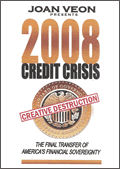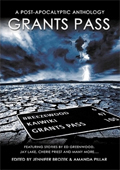OAS: THE HEMISPHERIC GOVERNMENT SHAPING YOUR FUTURE
By
CJ Graham
December 26, 2009
NewsWithViews.com
The United States has a new Permanent Ambassador to the OAS. Why should this be important to you? Why did this go almost unremarked by most in the media? Should we be concerned that this new Ambassador once had a leadership role within MALDEF and may have an agenda that would not best serve all American citizens, especially with the highly contentious immigration and amnesty issues facing our nation?
Ambassador Carmen Lomellin U.S. Permanent Representative to the Organization of American States (OAS)
(Excerpts)
[Carmen Lomellin was confirmed by the United States Senate as Permanent U.S. Representative to the Organization of American States, with the rank of Ambassador, on November 20, 2009.
During the Clinton Administration, Ambassador Lomellin held the positions of White House Liaison for the U.S. Office of Personnel Management and Director of that agency’s Office of International Affairs.
Ambassador Lomellin has experience in local government (Chicago, Illinois). She worked for Mayor Richard M. Daley as Director of the Private Industry Council of Chicago and also implemented and managed one of the nation’s most successful graffiti abatement programs.
Ambassador Lomellin has worked for the Mexican American Legal Defense and Educational Fund where she was the Director of Leadership Development, and for Chicago United, a civic think tank, as Director of Economic Development.]
NEW US PERMANENT REPRESENTATIVE TO THE OAS PRESENTED CREDENTIALS December 4, 2009
(Excerpts)
[Ambassador Carmen Lomellin on Friday presented credentials to the Secretary General of the Organization of American States (OAS), José Miguel Insulza, to become the new Permanent Representative of the United States to the Organization.
Ambassador Carmen Lomellin most recently served as Director of Outreach within the OAS Secretariat of External Relations and previously was Executive Secretary of the Inter-American Commission of Women (CIM).
The new Permanent Representative worked as Director of Leadership Development for the Mexican American Legal Defense and Educational Fund (MALDEF) and has spent a major part of her professional career and personal life working on women’s issues, particularly those in the United States Hispanic community. ]
(Excerpts from site)
[Founded in 1968, MALDEF is the nation’s leading non-profit Latino legal organization. Often described as the “law firm of the Latino community,” MALDEF promotes equality and justice through litigation, advocacy, public policy, and community education in the areas of employment, immigrants’ rights, voting rights, education, and language rights.]
Authorities: Permanent Representatives to the OAS the company our new Ambassador will be keeping.
What is The Organization Of American States (OAS) and how does it affect the lives and liberty of average American citizens?
Many
believe the United Nations to be a paper tiger of blustering dignitaries,
soaring rhetoric and financial scandal, accomplishing nothing. We would
be much better off were that the case.
In truth, the United Nations has worked for decades, systematically
laying a framework for world government and incrementally, region by
region, they are accomplishing their goals.
The OAS is an arm of the United Nations and follows closely the United Nations mandates in its aspirations and accomplishments.
The OAS is a 35 member regional hemispheric organization and the United States is one member state.
(Excerpts)
[The Organization of American States (OAS) is the world's oldest regional organization, dating back to the First International Conference of American States, held in Washington, D.C., from October 1889 to April 1890. At that meeting the establishment of the International Union of American Republics was approved. The Charter of the OAS was signed in Bogotá in 1948 and entered into force in December 1951. The Charter was subsequently amended by the Protocol of Buenos Aires, signed in 1967, which entered into force in February 1970; by the Protocol of Cartagena de Indias, signed in 1985, which entered into force in November 1988; by the Protocol of Managua, signed in 1993, which entered into force on January 29, 1996; and by the Protocol of Washington, signed in 1992, which entered into force on September 25, 1997. The OAS currently has 35 member states. In addition, the Organization has granted permanent observer status to 62 states, as well as to the European Union.]
It is hard to comprehend the complexity and enormity of a hemispheric government. It is even more difficult to explain it but I can’t think of anything more critical for the American citizen to understand.
I have laid out some of the framework for this behemoth and after you have read this and explored at least a few of the links, I hope you will ask the same question which deeply troubles me; what does any of this have to do with our Constitutionally mandated Representative Republic?
While this issue is not exactly light reading, it will go a long way to explain why Washington doesn’t listen to or care what Americans want. If you have wondered who is pulling the strings in DC, you will want to know more about the OAS, whose tentacles reach across the hemisphere and strangle our liberty and our way of life, with the funding, input and leadership of the United States Government.
Each day, while you are working or looking for work, while your children are in school NOT learning about our nation and its rich history, there are groups working diligently to strengthen a framework for a ‘Consolidation of Democracy’. They are well funded and heavily supported by Civil Society organizations, governments and corporations. They are planning, meeting, writing, voting and growing in strength and size. They are changing the face of the hemisphere and our nation yet most of us have never heard of them. We have not elected them and we certainly do not approve of the changes they are instituting. But they are not accountable to us.
Do not be fooled by those who would tell you this is nothing but pomp and circumstance. That is what they need you to keep believing, while they plan and activate. The OAS came into being in 1948. The signing of the NAFTA agreement in 1993 and the First Summit of the Americas in 1994, gave the OAS a new mandate. You can see the handy work in much of our legislation and administrations policies. Next time our so called ‘Representatives’ put forth legislation that seems contrary to the will of the American people or to the good of the nation, and force it through without shame, look to the OAS, the Summits of the Americas and further to the United Nations.
The OAS media center has video (in Spanish) and even if you can’t understand, you can see the system in action. There are also audio recordings and written speeches in English listed there. Two TV commercials about the Inter-American Democratic Charter can be watched here. I wonder if these were ever shown on American TV?
A news clip shows President Obama speaking at the Fifth Summit of the Americas in Trinidad and Tobago in 2009. A news report on the Fifth Summit of the Americas can be found here.
Below are links and excerpts from OAS websites which describe their mission and activities. I have not listed all simply because there is no end to them. Each organization has sub-organizations and departments.
[The Summits of the Americas bring together the Heads of State and Government of the Western Hemisphere to discuss common concerns, seek solutions and develop a shared vision for their future development of the region, be it economic, social or political in nature]
JSWG Joint Summit Working Group
[During the Third Summit of the Americas, held in Quebec City, Canada, in April of 2001, the partner institutions of the Summit Process (the Economic Commission for Latin America (ECLAC), the Inter-American Development Bank (IDB), the Pan American Health Organization (PAHO), and the World Bank), coordinated by the Organization of American States (OAS), presented their first joint hemispheric report, outlining the activities carried out in fulfillment of the mandates of the Second Summit of the Americas, held in Santiago, Chile, in April of 1998.]
The Inter American Development Bank
[The IDB, established in 1959 to support the process of economic and social development in Latin America and the Caribbean, is the main source of multilateral financing in the region.]
IAJC
Inter American Juridical Committee
[The Committee serves the Organization as an advisory body on juridical
matters of an international nature and promotes the progressive development
and the codification of international law.]
CIDI Inter American Council for Integral Development
[The Inter-American Council for Integral Development (CIDI) is an organ of the OAS with decision-making power in matters of partnership for integral development. It was established through the entry into force of the Protocol of Managua on January 29, 1996.]
SEDI Executive Secretariat for integral development
[Other than its role as an intergovernmental organization promoting Democracy, Human Rights and Security in the region, the OAS is also the foremost Space for Cooperation in the Americas.]
The Inter-American Commission on Human Rights (IACHR)
[The IACHR is one of the two organs of the inter-American system entrusted with promoting and protecting human rights.]
Pan American Health Organization (PAHO)
[Its mission is to “lead strategic collaborative efforts among member states and other partners to promote equity in health, to combat disease, and to improve the quality of and lengthen the lives of the peoples of the Americas.”]
The Inter-American Children’s Institute (IIN)
[The Institute is a specialized organization that helps create public policy on children in the Americas, promotes the partnership between the State and civil society, and cultivates a critical awareness of the problems affecting children and adolescents in the region.]
The Inter-American Commission of Women (CIM)
[Created by the Sixth International Conference of American States (Havana, 1928), the Inter-American Commission of Women (CIM) is the OAS’ advisory body on issues related to women in the Hemisphere and the principal forum generating hemispheric policy to promote the rights of women and gender equality and equity.]
The Inter-American Institute for Cooperation on Agriculture (IICA)
[Founded in 1942, the Inter-American Institute for Cooperation on Agriculture (IICA) is the inter-American system’s organization specializing in the agricultural sector and rural territories.]
Inter-American Committee on Natural Disaster Reduction (IACNDR)
[The Inter-American Committee on Natural Disaster Reduction (IACNDR) was created by the General Assembly in resolution AG/RES. 1682 (XXIX-O/99) to address problems related to natural disasters and to serve as the leading forum at the Organization of American States (OAS) for discussion of this topic, in coordination with the competent national organizations.]
Justice Studies Center of the Americas
[Its objectives are to help strengthen human resources, facilitate the exchange of information and other forms of technical cooperation, and support reform and modernization of the justice systems in the region.]
Pan American Development Foundation (PADF)
[Established in 1962, the Pan American Development Foundation (PADF) is a private, nonprofit, nongovernmental institution that operates under a cooperation agreement concluded with the OAS to support development programs and assistance to victims of natural disasters and humanitarian crises.]
Inter-American Defense College
[The Inter-American Defense Board (IADB) was established in 1942 to study and recommend measures for the defense of the Hemisphere. It is the oldest multilateral military organization in the world. It also supervises a senior-level academic program in security and defense studies at the Inter-American Defense College.]
Inter-American Court of Human Rights
[The Inter-American Court of Human Rights is an autonomous judicial body of the OAS whose purpose is to apply and interpret the American Convention on Human Rights.]
Inter-American Telecommunication Commission (CITEL)
[Its mission is to facilitate and promote the sustained development of telecommunications in the hemisphere.]
Inter-American Committee on Ports (CIP)
[The purpose of the Inter-American Committee on Ports (CIP) is to serve as the permanent inter-American forum of the member states of the Organization for strengthening cooperation in the development of the port sector, with the active participation and collaboration of the private sector.]
Inter-American Drug Abuse Control Commission (CICAD)
[CICAD's anti-drug program is divided into six areas of activity: Demand Reduction; Educational Research and Development; Supply Reduction and Alternative Development; Money Laundering; Institutional Development; the Multilateral Evaluation Mechanism (MEM), and the Inter-American Observatory on Drugs.]
|
Subscribe to the NewsWithViews Daily News Alerts! |
Inter-American Committee against Terrorism (CICTE)
[The Secretariat of the Inter-American Committee against Terrorism (CICTE) was established by Executive Order 05-13, Rev. 1. Its mission is to support the member states at CICTE's regular sessions and preparatory meetings, to offer technical assistance and training programs, and to promote coordination and cooperation among the member states and with multilateral and international organizations so as to prevent, combat, and eliminate terrorism.]
1-
OAS
Civil Society
2- Committee
on Juridical and Political Affairs
3- Committee
on Administrative and Budgetary Affairs
4- Committee
on Hemispheric Security
5- Committee
on Inter-American Summits Management and Civil Society Participation
in OAS Activities
6- Inter-American
Council for Integral Development
7- Inter-American
Juridical Committee
8- Academic
and Technical Studies Scholarship Selection Committee
9- Department
of Legal Services
10- Secretariat
for Political Affairs
11- Department
of Electoral Cooperation and Observation
12- Department
of Sustainable Democracy and Special Missions
13- Department
of State Modernization and Good Governance
14- Executive
Secretariat for Integral Development
15- Office
of Education and Culture
16- Office
of Scholarships, Training, and Capacity-building
17- Department
of Economic Development, Trade, and Tourism
18- Science,
Technology, and Innovation Office
19- Foreign
Trade Information System (SICE)
20- Department
of Sustainable Development
21- Department
of Social Development and Employment
22- Department
of Public Security
23- Office
of Humanitarian Mine Action
24- Section
against Transnational Organized Crime
25- Department
of International Law
26- Department
of Legal Cooperation
27- Department
of Special Legal Programs
28- Department
of International Affairs
29- Educational
Portal of the Americas
� 2009 CJ Graham - All Rights Reserved















